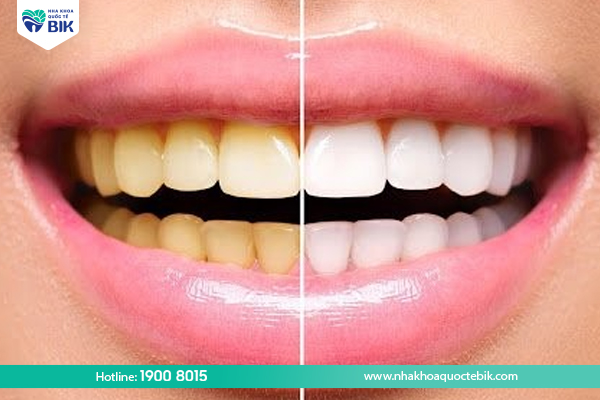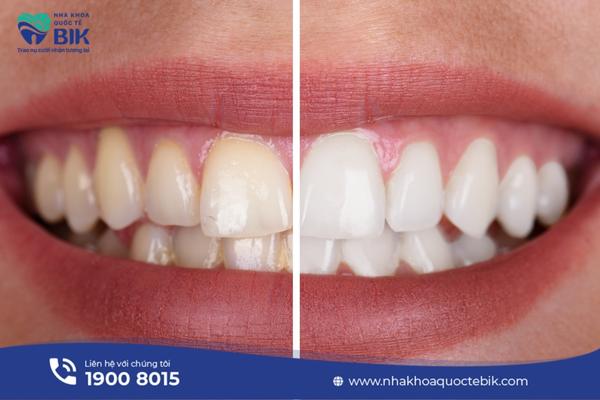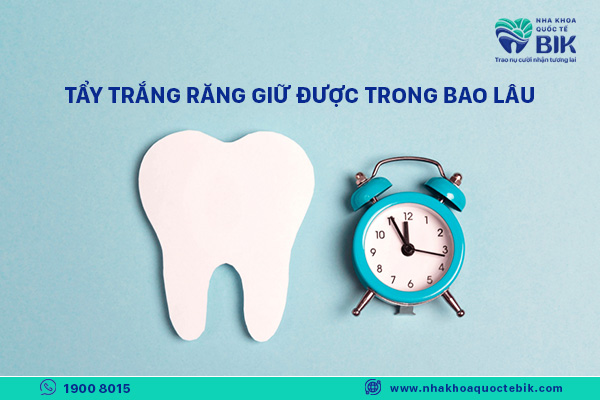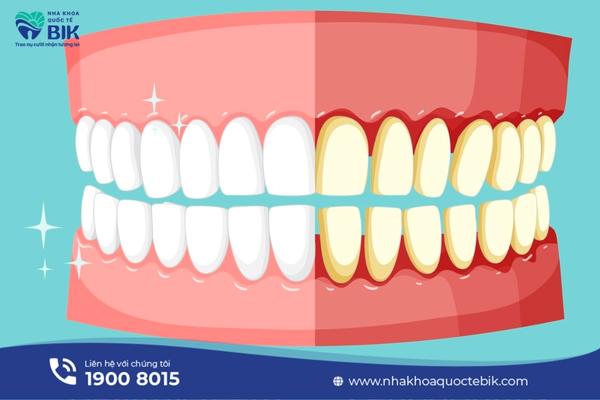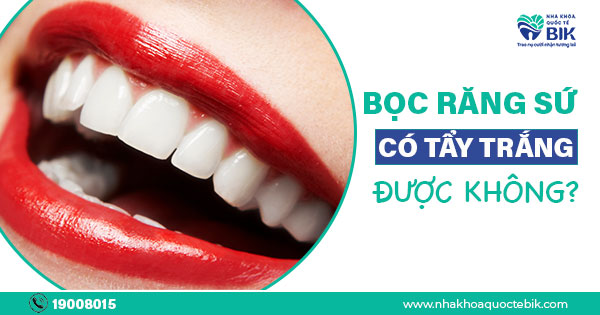Teeth whitening at home with Baking Soda is quite effective
Please refer to the dental clinic’s instructions on how to whiten teeth with Baking Soda at home through the article below.
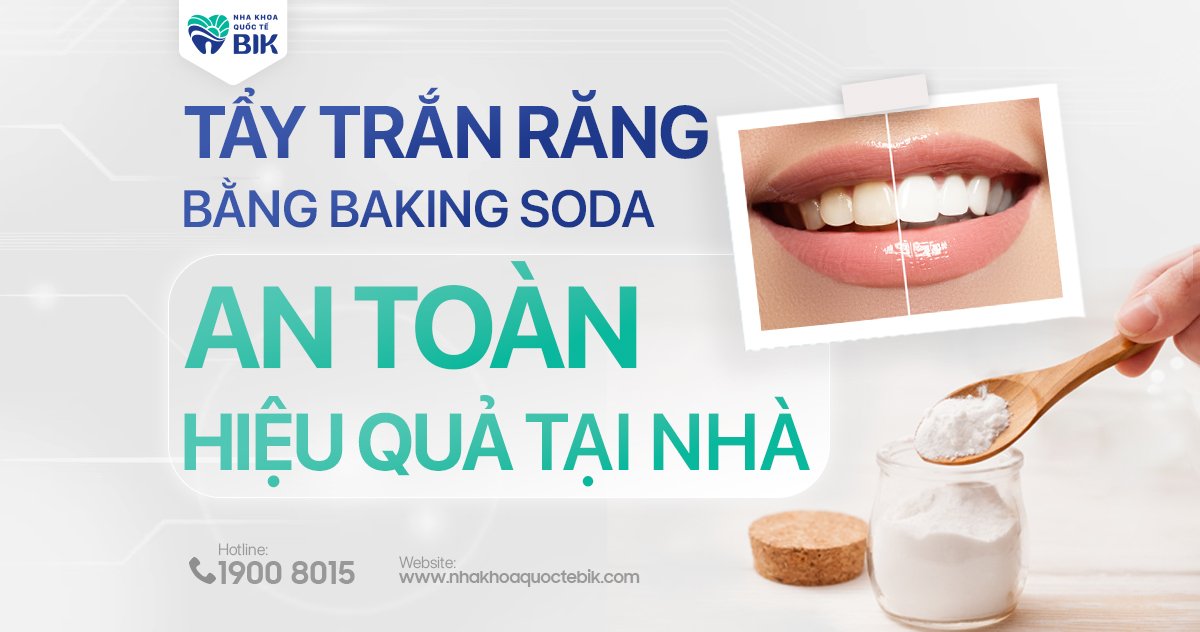
1. Top 6 Ways to Whiten Teeth with Baking Soda at Home
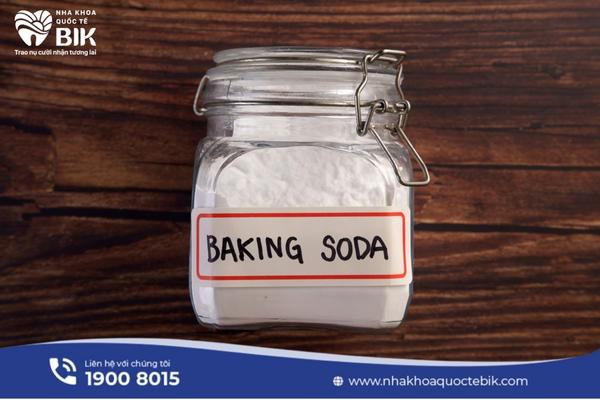
1.1 Whitening Teeth with Baking Soda and Water
The most basic method is to mix Baking Soda and water. Using a small cup or bowl, mix a few drops of water with half a teaspoon of powder to create a thick mixture. Then, use a toothbrush or finger to apply it to your teeth. Leave it for about two minutes and rinse your teeth with water.
1.2 Whitening Teeth with Baking Soda and Toothpaste
You can also try adding Baking Soda powder to your toothpaste. Alternatively, you can buy toothpaste that contains Baking Soda
1.3 Whitening Teeth with Baking Soda and Hydrogen Peroxide
You can combine Baking Soda with hydrogen peroxide – for effective teeth whitening. Mix one teaspoon of Baking Soda and half a teaspoon of hydrogen peroxide until the mixture turns into a toothpaste-like consistency.
Use the mixture to brush your teeth. Leave it for a minute or two before rinsing your teeth with water. Make sure to rinse thoroughly and use only 3% hydrogen peroxide to be safe.
1.4 Teeth whitening with baking soda and lemon juice
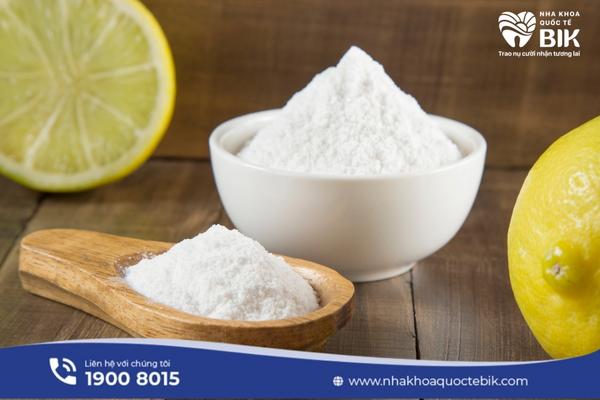
Lemon juice contains citric acid which is an effective bleaching agent. To use, mix half a teaspoon of baking soda with half a teaspoon of lemon juice. Use your toothbrush to brush your teeth with this mixture and leave it in your mouth for a minute before rinsing it off.
However, limit the use of this mixture because citric acid can be harmful to your teeth due to the acid in lemon.
1.5 Whiten Teeth with Baking Soda and Apple Cider Vinegar.
Mix three parts water and one part apple cider vinegar to create a paste, then mix it with Baking Soda and brush as usual.
1.6 Whiten Teeth with Baking Soda and Coconut Oil
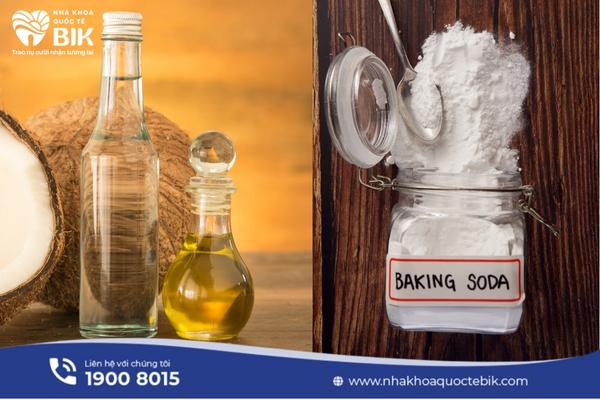
Another way to save money and avoid harmful chemicals is to use a coconut oil mixture on your teeth.
Coconut oil is a rich source of lauric acid, a saturated fatty acid that helps with weight loss and lowers cholesterol levels. Coconut oil also helps to resolve inflammation and heal wounds effectively.
When mixed with Baking Soda and essential oils, you get a paste that whitens your teeth while preventing cavities very well.
Coconut oil is great for whitening teeth thanks to the fatty acids in the ingredients. Just heat a cup of coconut oil until it becomes liquid, add two teaspoons of Baking Soda and you have an effective teeth whitening mixture.
2. How long should you whiten your teeth with Baking Soda?
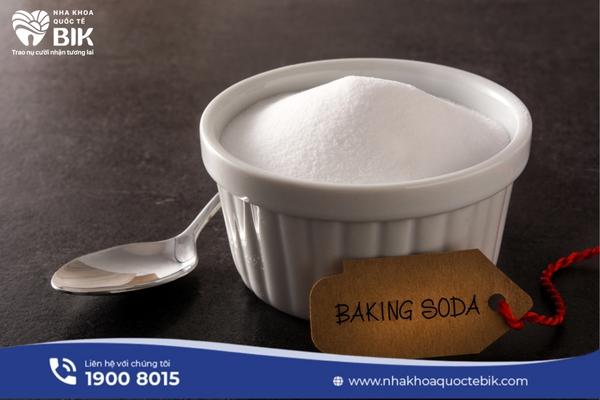
Brush your teeth with the Baking Soda mixture for no more than two minutes at a time. Prolonged exposure to Baking Soda (a mild abrasive) can wear down your tooth enamel. When you are brushing your teeth, make sure you brush properly, especially when brushing with Baking Soda.
Afterwards, rinse your mouth with water or mouthwash. Don’t forget to rinse your toothbrush too.
You can repeat the Baking Soda method every other day for a week or two to resurface your teeth and enamel and prevent enamel erosion.
3. Is it safe to whiten teeth with baking soda?
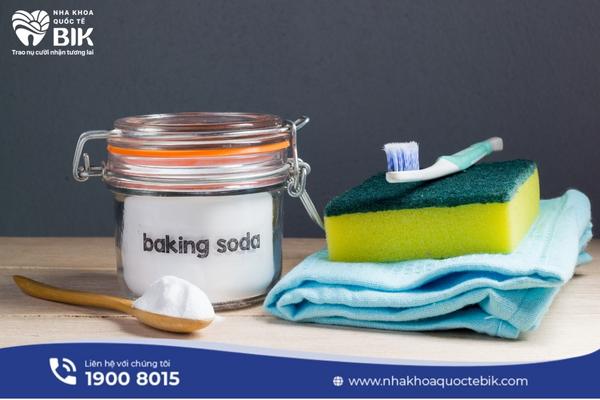
To whiten teeth with baking soda too much can damage tooth enamel due to its abrasive properties. In addition, baking soda is not a substitute for toothpaste because it does not contain fluoride to prevent tooth decay.
To use baking soda to whiten teeth in moderation and in the right dose, use a pea-sized amount, enough to cover the bristles of the toothbrush head. Gently brush your teeth with baking soda for about a minute or two, making sure to apply it to every corner, nook, cranny, and surface of the teeth. Then rinse with water.
Brushing your teeth for too long or using Baking Soda too often can lead to enamel erosion. Do not use Baking Soda if you have braces or other dental treatments.
If you notice tooth sensitivity or other noticeable symptoms due to using Baking Soda, make an appointment with your dentist for the best support.


